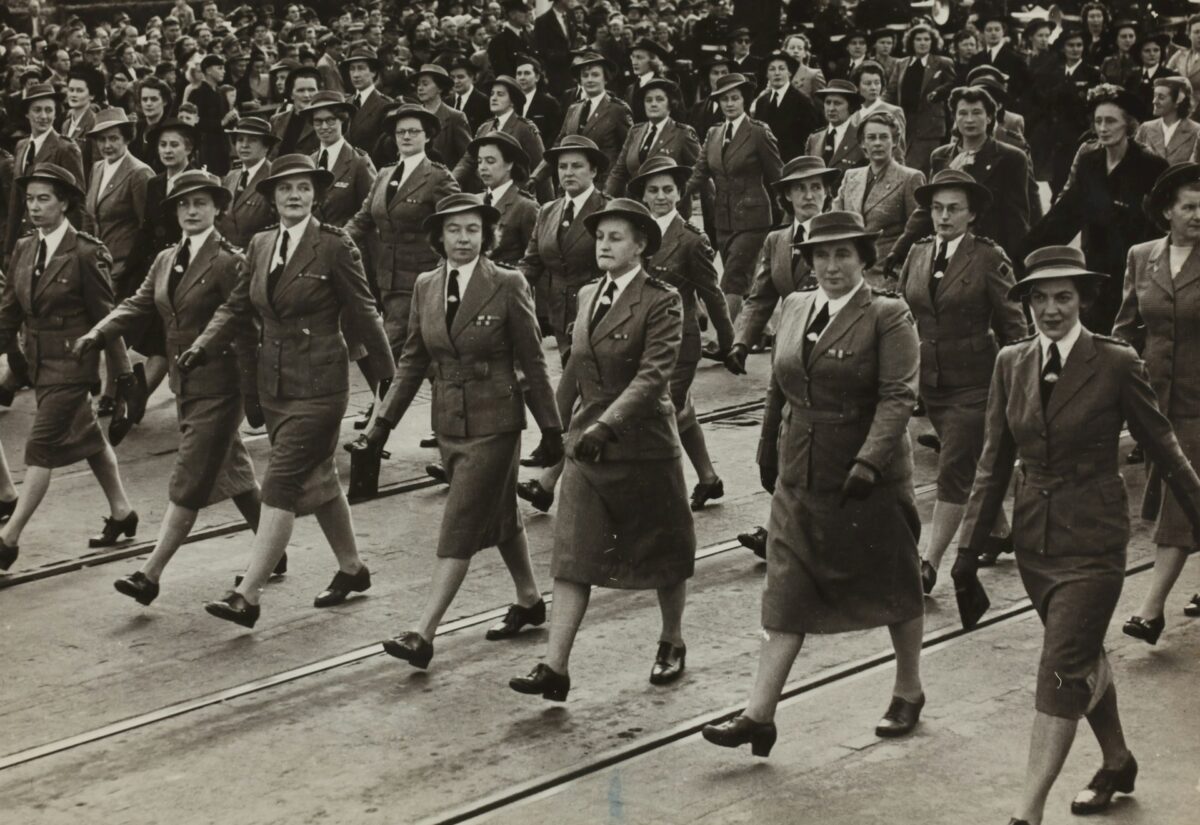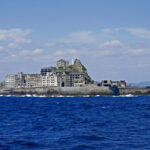 Unsplash/Museums Victoria
Unsplash/Museums VictoriaDuring the Second World War, women across Britain, and in many other countries, stepped into jobs traditionally dominated by men. With millions of men conscripted into the armed forces, industries, services, and entire sectors would have collapsed without the sudden and urgent influx of female workers. Everyone knows about the munitions factory workers and the Land Girls, but there were plenty of less-expected roles where women not only showed up—they excelled, often under dangerous, physically demanding, or emotionally taxing conditions. These roles didn’t just fill gaps; they reshaped assumptions about what women could do and forced entire institutions to rethink their limitations. Here are some of the surprising jobs women dominated during WWII—jobs that broke boundaries, changed minds, and kept the country running.
Aircraft engineers and test pilots
While women working in aircraft factories was not entirely unexpected, what surprises many is just how far they went within that industry. Women didn’t just rivet fuselages. They designed, built, repaired, and even test-flew aircraft. In Britain, women at organisations like the Air Transport Auxiliary (ATA) delivered Spitfires, Hurricanes, and bombers across the country. These deliveries were often done solo, without radios, in poor visibility, and using only basic navigation tools. The women flew over 147 different types of aircraft and received minimal training for each model, relying on skill and nerve. Their work was so effective that by the end of the war, they had logged more than 300,000 flying hours, proving women could fly military planes just as capably as men.
Intelligence analysts and codebreakers
Bletchley Park has rightly become more famous in recent years, but it’s still not widely understood just how many women worked in Britain’s wartime intelligence. Women made up around 75% of Bletchley’s 10,000-strong workforce, doing everything from codebreaking to operating complex machinery like the Bombe and Colossus computers. They intercepted, analysed, and cross-referenced German military communications, deciphering patterns and contributing vital intelligence to the war effort. Many had backgrounds in languages, mathematics, or logic, while others were recruited from more unexpected sources, like crossword competitions. Their long hours, cold huts, and secrecy-bound existence meant their work went unrecognised for decades, but their contributions were fundamental in turning the tide of the war.
Tram and bus conductors (and drivers)
With male transport workers away at war, women stepped in to keep cities moving. In London and other major cities, women donned uniforms and ran trams, buses, and even trains. While women drivers weren’t officially allowed on all public routes, they drove vehicles around depots, across cities, and between rural lines. Some served in depots as mechanical engineers and inspectors, doing everything from changing tyres to troubleshooting engine problems. They often faced heckling or resistance from passengers who didn’t like seeing women in charge, but they showed up, day after day, ensuring that war workers, medics, and children were able to travel safely. Transport couldn’t have functioned without them.
Grave diggers and cemetery workers
As the war dragged on and civilian casualties mounted, particularly during the Blitz, cemeteries faced a major labour shortage. Women were recruited across several British cities to work as grave diggers, maintaining cemetery grounds and preparing burial plots. Some worked alongside local councils in emergency burial response teams. The work was physically hard, emotionally draining, and often done in cold, wet conditions, especially during the winter of 1940–41 when bombing was relentless. But these women stepped up to ensure the dead were treated with dignity, often balancing this grim task with part-time roles in nursing, civil defence, or voluntary relief work.
Gas mask testers and bomb site inspectors
Some of the most unexpectedly dangerous jobs of the war fell to women working in bomb disposal units and civil defence. Testing gas masks required them to don protective gear and be briefly exposed to real gas to ensure the filters worked. Others inspected bomb-damaged buildings for structural safety or unexploded ordnance. Women in these roles worked alongside engineers and emergency services to assess risk and determine when it was safe for rescue or repair crews to enter. They were sometimes first on the scene after an air raid, navigating rubble and danger to carry out essential inspections.
Beekeepers and pest control officers
Food shortages and rationing created a new urgency around protecting Britain’s domestic food sources. Women trained and served in roles as pest control officers, identifying rat infestations in food storage depots and managing insect threats in both urban and rural areas. Some also became trained beekeepers, maintaining hives to support honey production as a substitute for scarce sugar. In Scotland and Wales, women helped manage hillside apiaries and collected pollen data for agricultural researchers. These jobs may sound niche, but they were part of a broader war effort to keep Britain fed, and every drop of honey or pest-free grain made a difference.
Butchers and fishmongers
With many male shopkeepers and tradesmen conscripted, women took on highly skilled roles in high street food shops. Butchery, long considered a male-dominated trade, saw an influx of female workers who were quickly trained, or taught themselves—how to handle carcasses, use sharp knives, and manage cold storage. Women also ran fish stalls and fishmongers, gutting and filleting fish with speed and skill. They dealt with ration coupons, customer queues, and deliveries, all while managing safety, hygiene, and logistics. The image of a woman in a bloodstained apron expertly carving a leg of lamb became part of wartime Britain’s new normal.
Firefighters and fire watchers
While frontline firefighting still relied heavily on men, women served in the Auxiliary Fire Service and National Fire Service in huge numbers. They trained in hose handling, pump operation, and emergency triage. Fire watchers, often stationed on rooftops or tall buildings, scanned for incendiary bombs and coordinated response teams. When large fires broke out, especially during the Blitz, women manned phones, distributed equipment, drove support vehicles, and even operated mobile water pumps. Some women helped evacuate people from burning buildings and provided first aid on the scene. They worked through nights of bombing, often returning to duty with no rest, covered in soot and ash.
Mapmakers and cartographers
Accurate mapping was essential for both military strategy and civil planning. Thousands of women were trained in drafting, cartography, and topographic surveying. Some worked for the Ordnance Survey, redrawing and updating maps by hand. Others worked on secret projects, like designing detailed maps of the Normandy coastline or mapping industrial targets in Germany for RAF bombing campaigns. These jobs required meticulous attention to detail and mathematical skill, and the stakes were enormous—one wrong contour or mislabelled road could cost lives. Many of these women never spoke about their work, which remained classified for decades.
Balloon barrage operators
To defend key industrial and urban areas against low-flying Luftwaffe attacks, Britain launched thousands of large barrage balloons tethered by steel cables. These balloons created obstacles that forced enemy planes to fly higher, reducing their accuracy. Operating these balloons required skill and strength—winching them up and down, maintaining their moorings, and refilling them with gas in all weather. Women in the Auxiliary Territorial Service and WAAF were trained for these roles, and many worked long shifts outdoors, sometimes during bombing raids. They wore heavy boots, gloves, and oilskins, and were frequently moved between sites as part of a mobile balloon unit.
Photographic analysts and aerial interpreters
One of the most technical and little-known jobs held by women during the war was aerial photo analysis. Working at facilities like RAF Medmenham, women pored over aerial photographs taken by reconnaissance aircraft, identifying enemy positions, new infrastructure, camouflage patterns, and troop movements. This work required a sharp eye, patience, and intense training in interpreting shadows, terrain, and scale. Some women analysts were responsible for discovering crucial targets, including the German V-weapon sites. Their analysis fed directly into mission planning and bombing raids.
Telegraphists and signal operators
Communication was the backbone of military coordination, and women played a key part in keeping messages flowing. In the ATS and WRNS, women worked as telegraphists, radio operators, and dispatchers. They encoded and decoded messages, operated switchboards under pressure, and worked in outposts from London bunkers to coastal observation posts. Some monitored distress signals and enemy chatter, relaying vital information in real time. The hours were long, the equipment complex, and the margin for error nonexistent.
The war upended gender roles in ways that could never be entirely rolled back. While many women were pushed out of these jobs once peace returned, their legacy was lasting. They proved, in every corner of the war effort—from rooftops to cockpits—that they could do hard, skilled, and dangerous work just as capably as the men they replaced. These roles might not all show up in textbooks or school lessons, but they were essential to Britain’s survival. And the next time someone says women weren’t on the frontlines, these jobs tell a different story—one of quiet strength, grit, and determination that reshaped the future.



